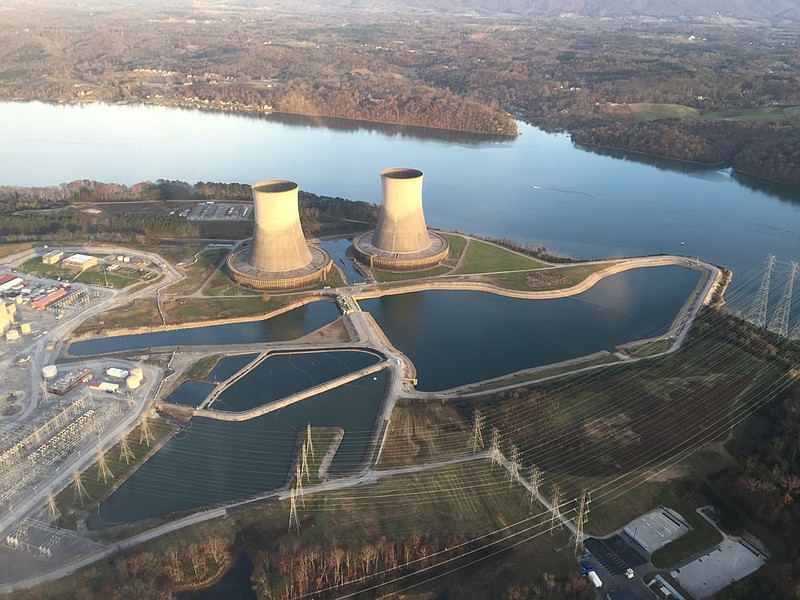The Tennessee Valley Authority has restored full power to its newest reactor at the Sequoyah Nuclear Plant after a 23-day refueling outage abbreviated by the coronavirus pandemic.
The TVA resumed 100% power operations Friday at the Unit 2 reactor at the Sequoyah plant near Soddy-Daisy and is beginning a similar refueling outage this weekend at the Unit 1 reactor at the Watts Bar Nuclear Power plant up the river near Spring City, Tennessee.
The agency completed a similar refueling outage at its Browns Ferry Nuclear Plant on March 26 when the COVID-19 virus began to limit activity and travel during March.
Such outages are required at nuclear plants to replace nuclear fuel rods and conduct maintenance and safety inspections of equipment. The refueling is usually done about every 18 months for each unit and employs hundreds of outside contract workers brought to the plant to perform tests and install equipment.
Because of the COVID-19 virus, the TVA is scaling back some of its planned maintenance work to limit the number of individuals on site and is performing health screenings of all TVA employees and contractors coming to the plants.
The agency also increased personal protective equipment required for the outage and has increased cleaning of equipment at the plant and sanitizing shared tools used during the outage.
The TVA has had six employees test positive for the COVID-19 virus, including one at Watts Bar. But three of those who tested positive had already been working at home for some time. The agency has about 10,000 employees and employs thousands of contract workers each year.
The Sequoyah refueling outage involved about 1,600 employees and contractors over the past four weeks, nearly 200 fewer workers than originally planned. The TVA delayed its refueling plans at Sequoyah for two weeks and deferred some originally planned work until the next refueling outage in another 18 months due to the COVID-19 crisis.
During the recent Sequoyah refueling, the TVA replaced 80 of the unit's 193 fuel assemblies and conducted detailed inspections of various systems to confirm all components are performing their safety functions. Other major maintenance activities included replacing or refurbishing a number of motors, valves and other plant components, as well as several modifications for improving safety.
"The entire Sequoyah team, supported by our union and contract partners, safely completed over 10,500 work activities during the outage," said Matt Rasmussen, Sequoyah site vice president.
TVA President Jeff Lyash said the refueling outages done so far at Sequoyah and Browns Ferry amid the COVID-19 virus outbreak "were extremely well conducted outages and the scope of the work was everything that we needed to complete from a safety, reliability and regulatory point of view.
"Our workers and contractors did an exceptional job at implementing the risk mitigation controls that we had to implement around COVID-19 and still getting the job done without a hitch," Lyash said following Thursday's TVA board meeting. "We're taking the same approach to our outage at Watts Bar as we did at Browns Ferry and Sequoyah, and I expect similar results."
Collectively, the TVA's seven reactors at the Browns Ferry, Sequoyah and Watts Bar plants provided 43% of the electricity used in the Tennessee Valley in the first three months of 2020.
Contact Dave Flessner at dflessner@timesfreepress.com or 423-757-6340.
